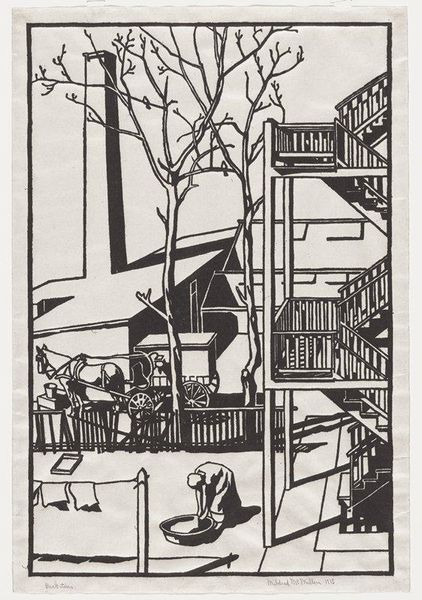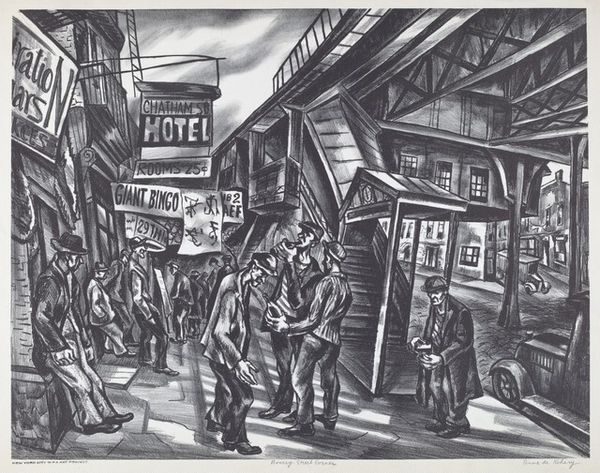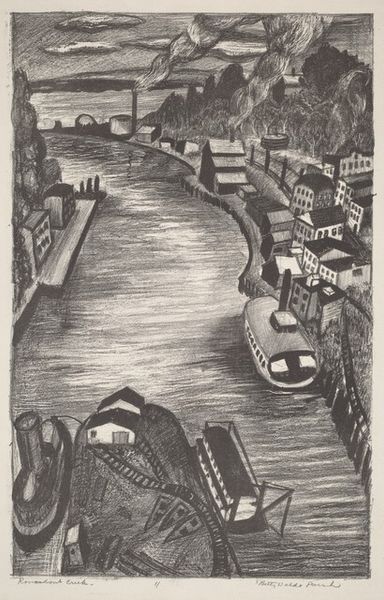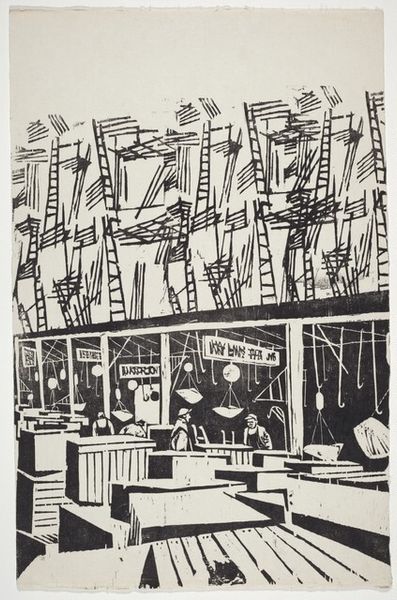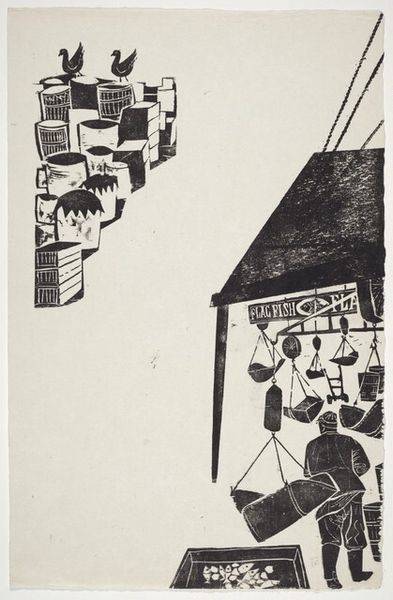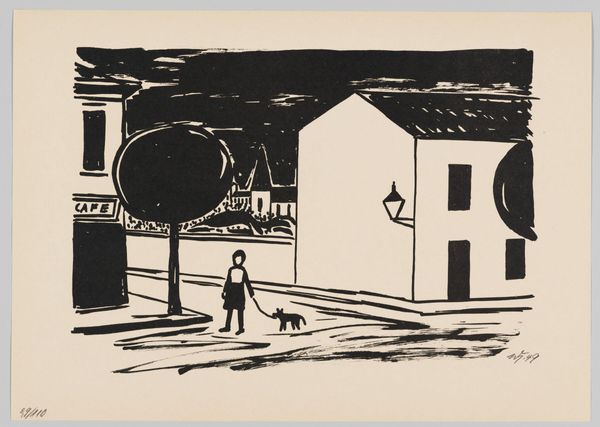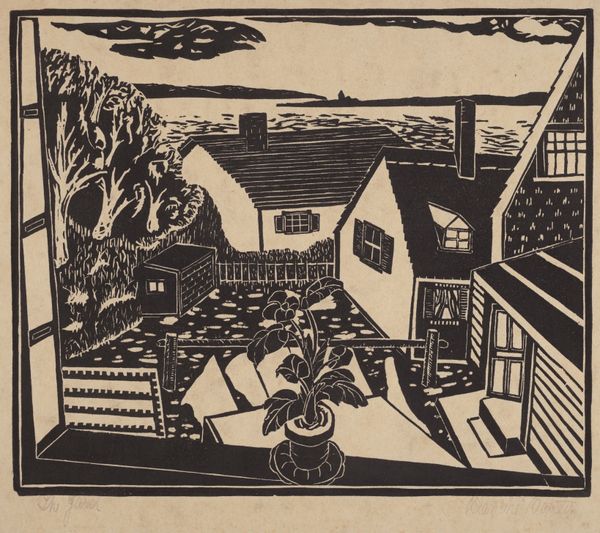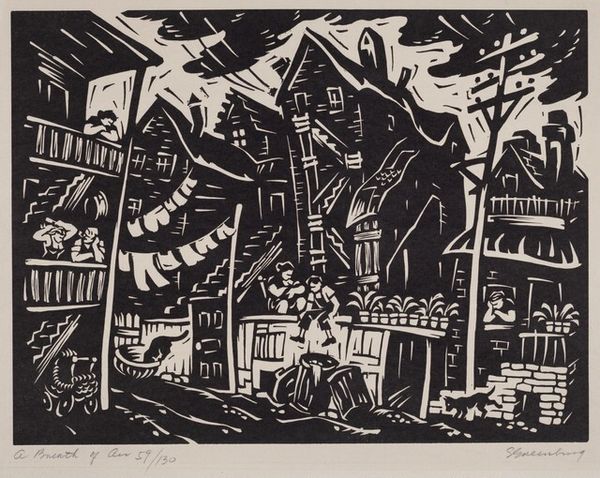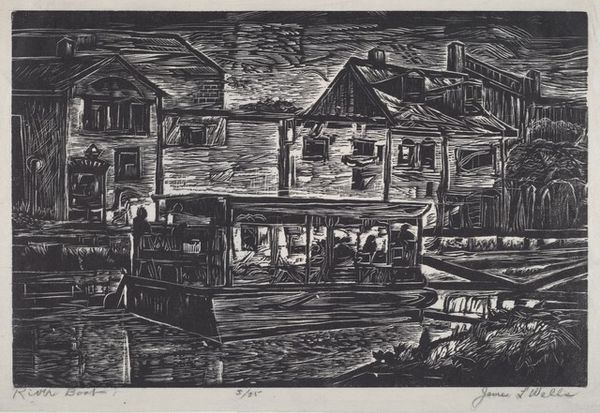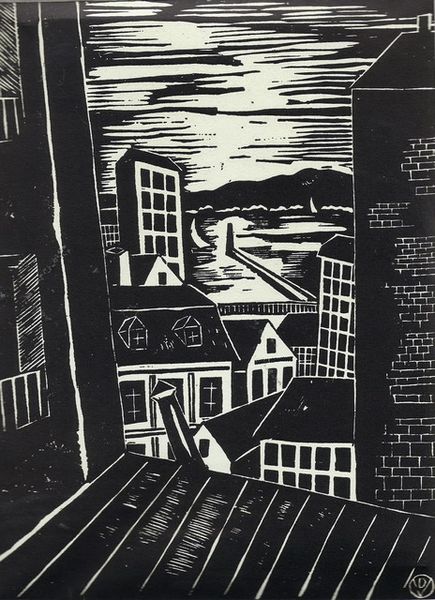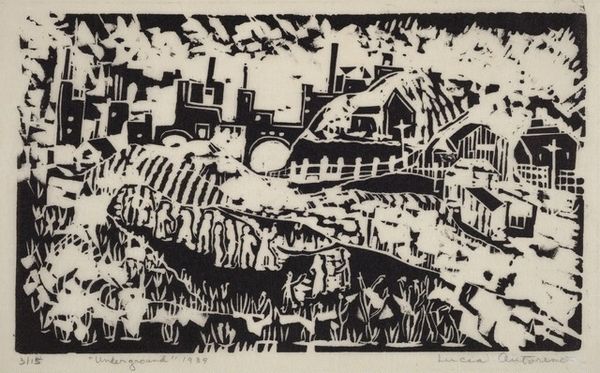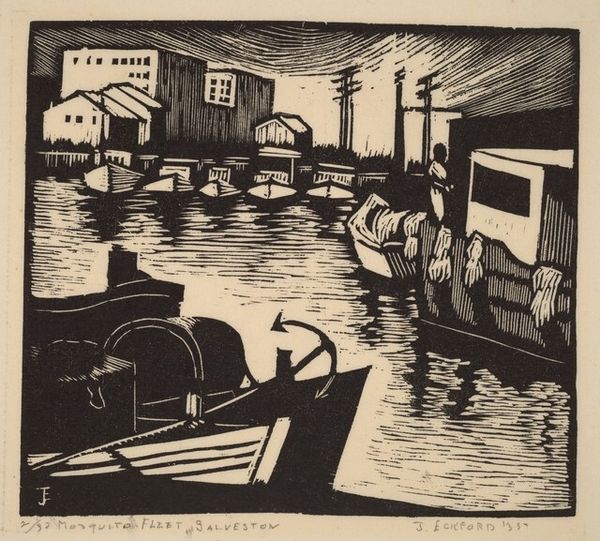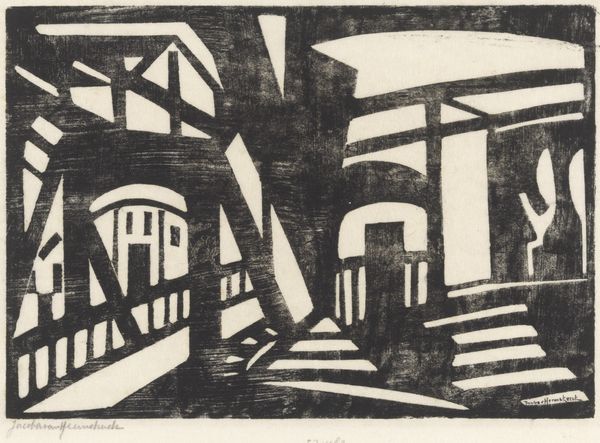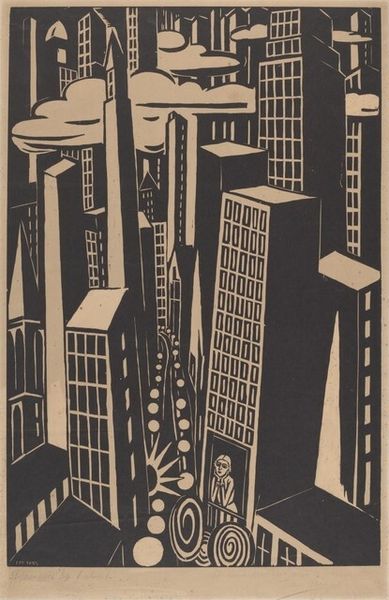
print, woodcut
art-deco
caricature
caricature
woodcut
cityscape
modernism
Dimensions: image: 33 × 24.8 cm (13 × 9 3/4 in.) sheet: 40.6 × 30.5 cm (16 × 12 in.)
Copyright: National Gallery of Art: CC0 1.0
Editor: So, this is Howard Cook's woodcut print, "Christopher Street" from 1928. It’s stark, black and white, and has this looming sense of the city... a little oppressive, maybe? What do you see in this piece? Curator: Oppressive is an interesting reading. What strikes me immediately is the tension between the modern and the traditional, a conversation very present in the 1920s. The elevated train, the truck – those represent progress, industry, and the changing urban landscape. But look closer. How does Cook portray the figures walking below? Do they seem empowered by this modernity or dwarfed by it? Editor: Dwarfed, definitely. They're like shadows compared to the heavy machinery and architecture. Are you saying Cook is making a statement about industrialization dehumanizing people? Curator: Exactly. Consider also Christopher Street itself. In the 1920s, it was already becoming a known, if somewhat underground, center for queer life. Knowing that context, can we see the starkness of the print as also reflecting the precarity, perhaps even the bravery, of existing outside of dominant social norms at that time? Editor: That adds a whole new layer. I was just seeing a cityscape, but now I see a commentary on societal forces at play. The strong contrasts might also symbolize the social contrasts. Curator: Precisely! It’s not just a snapshot of a street. Cook uses the formal elements – the high contrast, the compressed space – to highlight these tensions. How does this shift your understanding of the piece? Editor: It makes it so much richer. I was stuck on the surface, but seeing the historical and social context opens up so many possibilities for interpretation. Thanks! Curator: Indeed, art becomes a powerful lens through which we can explore the complexities of history and identity. I'm glad you now appreciate its multiple layers!
Comments
No comments
Be the first to comment and join the conversation on the ultimate creative platform.
